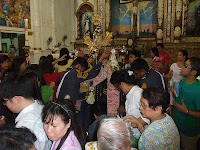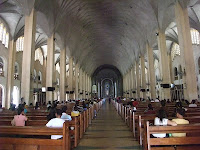nadulman or not choosing
In reading the gospel one gets to wonder why Jesus would ask a man disabled and sick for 38 years whether he wants to get well. After 38 years in your sickbed, who would not want to be healed? But the question is important. It is important because Jesus wanted the man to choose, to choose to be healed or to choose not to be healed. This is a very important issue during this season of lent for this is the mark whether the person has entered the world of values. We enter the world of values when we are already choosing, when we use our power to choose, when we discern and make a choice. When you are hungry and you eat something, you are merely acting on your hunger. You are not making a choice. If you are hungry and you choose not to eat, now you are choosing. If you are angry and you hit your enemy with a clenched fist, you are acting on your anger, you are not making a choice. But if you are angry wanting so much to hit the other person, but then you decide to control yoursel...









